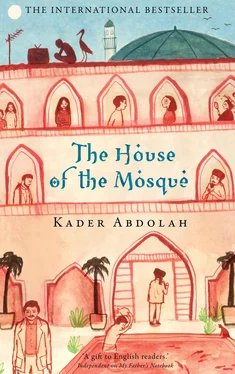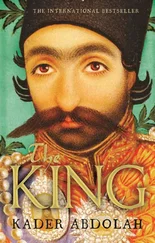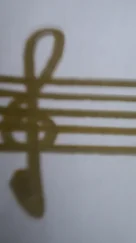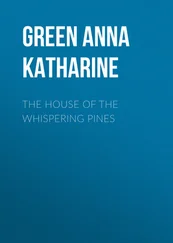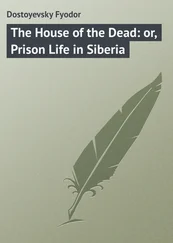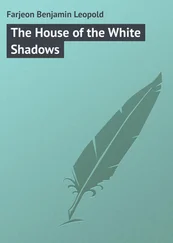The story is about a childless farmer who adores his cow. One day the cow falls ill. The wise men of the village advise him to have the cow slaughtered before it gets worse, but he refuses to listen.
One day, when the farmer is away, the cow drops dead. The villagers decide to bury the animal at once, before the farmer returns.
When he comes home and asks about his cow, everyone tells him that it wandered off. The farmer panics. He spends days looking for the cow. When he doesn’t find it, he decides his life is no longer worth living, and he stops eating.
The wise men of the village go to his house to comfort him and explain that it’s not right for a human being to mourn the loss of a cow. But the farmer is so upset that he thinks he’s turned into a cow. As the wise men enter his house, he begins to moo with grief. The wise men take out their handkerchiefs and wipe away their tears.
When the film was over, Nosrat turned on the light, just in time to see Khomeini reach for his handkerchief.
On the following Friday every ayatollah in the country made an unusual announcement at the end of his sermon: ‘Tonight a film is going to be shown on television. The film is called The Cow , and it’s been approved by Imam Khomeini. Islamic believers are allowed to watch it!’
People who didn’t have televisions flocked to the teahouses that evening to watch the film. It was a red-letter day in the history of Iranian cinema.
Aqa Jaan watched the film along with Lizard in the shed on the roof. It was his first film too. After he saw the cow and the farmer and the poverty-stricken houses, he had a hard time believing that this was the highly acclaimed cinema he’d heard so much about.
Shahbal and Jawad saw it together.
Nasrin and Ensi watched the film along with their former classmate.
Sadiq saw it in the company of a handful of Islamic women in Tehran, where she’d gone for a visit. With his sister’s help, Khalkhal had arranged for Sadiq to spend some time in the capital.
Zinat Khanom was staying at the house of Azam Azam, who had hired her to work as her assistant in the women’s prison. She had recently denounced Ahmad, declaring publicly in the mosque that she was ashamed of her son.
Zinat wasn’t alone in her denouncement. The television was full of devout parents who turned their backs on any child of theirs who dared to oppose the ayatollahs. Everyone was talking about it; no one understood it. Were the parents motivated by religious conviction? Or had they been brainwashed by the mullahs?
The day after Zinat denounced Ahmad, Ayatollah Araki called her into his office for a private talk. ‘Zinat Khanom,’ he said, ‘you are an example of the kind of Islamic woman this city needs. You are a real mahajjabeh . Holy Fatima is pleased with you. Now listen carefully. I order you to turn the women of Senejan into model Islamic women. I want all of them to look and act like Zinat Khanom. Is that clear?’
‘Yes, Ayatollah!’ Zinat said, and she sprang to her feet.
Zinat and six other fanatical women set up a morals committee and began to Islamise the behaviour of women in public places.
Most of the women in Senejan put on a black chador when they went out, but many young women had no desire to obey the Islamic regime and refused to wear a chador. The city was patrolled by the newly formed morals police, who cruised around in jeeps and checked to see whether the women in the streets were dressed according to the hijab .
In each jeep were two veiled women and one armed man. The moment they spotted a woman who was wearing make-up or whose clothing didn’t meet Islamic standards, they leapt out of the jeep, raced over to her and stopped her for questioning. If she listened to their advice and adjusted her chador or headscarf, they let her go, but if she protested, they arrested her, threw her in a waiting van and drove her to an undisclosed location to teach her a lesson.
All of the women who were arrested were brought to Zinat. She and Azam Azam had devised various ways to terrorise the women. For example, Azam Azam would smear syrup on their legs and Zinat would lock them in a dark, cockroach-filled room. Girls who talked back would be put in another dark room, where squeaking mice would scurry over their bare feet.
Recently Zinat had taken a rough towel and scrubbed the lipstick off a woman’s mouth with such force that her lips had bled.
On the night that everyone was glued to the television, watching The Cow , a group of Islamic students, acting with Khomeini’s approval, climbed over the wall of the American Embassy compound and burst into the building. In a lightning raid, they arrested the ambassador and sixty-five employees, who had been staying in the embassy as a security measure. To make sure that the Americans couldn’t try to free them in a large-scale military operation, the hostages were later transported to a number of secret locations.
As an added precaution, the most important hostages were driven to Qom, Isfahan and Senejan.
In the middle of the night Ayatollah Araki of Senejan was awakened in his bed by his assistant.
‘Get dressed,’ the assistant whispered. ‘You have a visitor.’
‘Who?’ the ayatollah asked.
‘A very young imam who says he’s been instructed to tell you a state secret.’
The ayatollah flung on his clothes. The young man was standing in the living room, waiting for him.
The ayatollah held out his hand and the young man kissed it. ‘I’m a student at the University of Tehran,’ he said. ‘I have a secret message for you from Ayatollah Khomeini.’
The ayatollah brought his head close to the student’s.
‘There are three cars parked out front,’ the student whispered in his ear, ‘with seven blindfolded Americans inside.’
Ayatollah Araki put on his turban and grabbed his walking stick. ‘I’m ready,’ he said.
He got into one of the vehicles, and they drove off into the desert.
Representatives of the Iranian and American governments met, with the Swiss as mediators, to discuss the release of the hostages, but the negotiations dragged on for months with no result. Khomeini had two non-negotiable demands: the extradition of the shah, so he could be tried in an Islamic court, and the release of billions of dollars in Iranian oil revenues that had been deposited in American banks.
The Americans were unwilling to extradite the shah, since they knew he would be executed by the ayatollahs. Nor did they wish to release the Iranian assets, which had been frozen in America and elsewhere. Negotiations were broken off. After that there was a long silence.
One hundred and seventy-two days later, six American transport planes flew through the night sky above Senejan. No one saw them; no one heard them. Half an hour earlier they had taken off from the deck of an American aircraft carrier in the Persian Gulf and, with Saddam Hussein’s permission, flown to Iran through Iraqi airspace. They were headed for a secret air-force base in the desert.
The Americans had been informed of the hostages’ hiding places by a spy in Khomeini’s inner circle. The plan was for the shah’s former commando units to free the hostages, after which they would be brought to the base by helicopter and then flown out of the country in transport planes.
But the rescue attempt was a disaster. Khomeini was the only one with a ready explanation: divine intervention. ‘Allah stopped them!’ he cried the next morning when it was announced that America’s top-secret military operation had failed. ‘Our country is under the protection of Allah,’ he continued calmly. ‘Why can’t the Americans understand that? It’s very simple: God struck down the enemy!’
It seems that several helicopters, damaged by a dust storm, had landed on the runway. As one of them tried to lift off, it skidded into a transport plane, and the two aircraft had burst into flames. The desert had been the scene of a raging inferno, though no one had witnessed it.
Читать дальше
